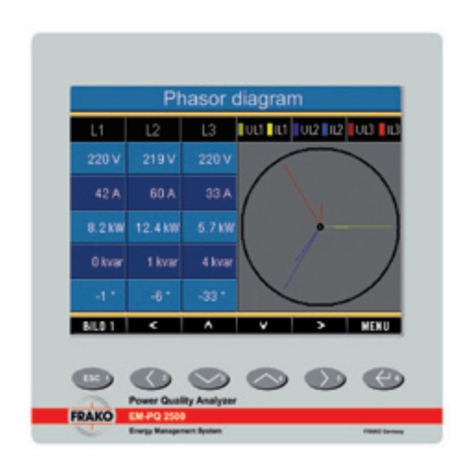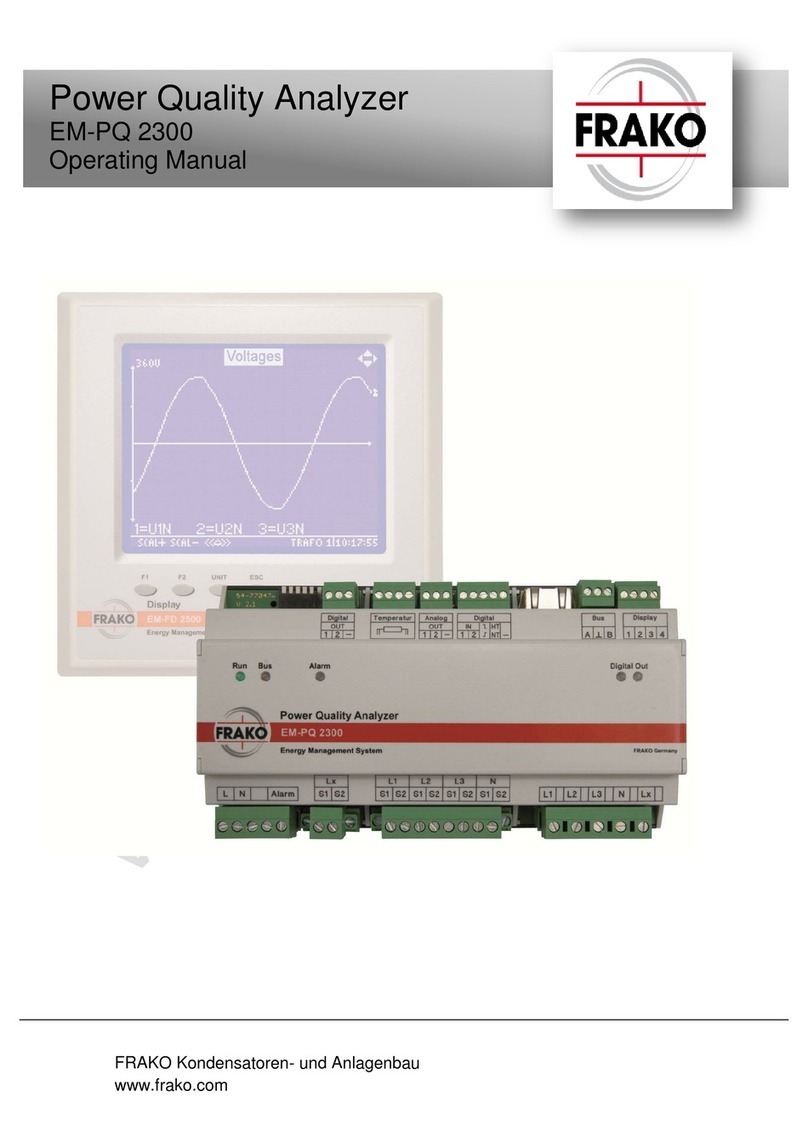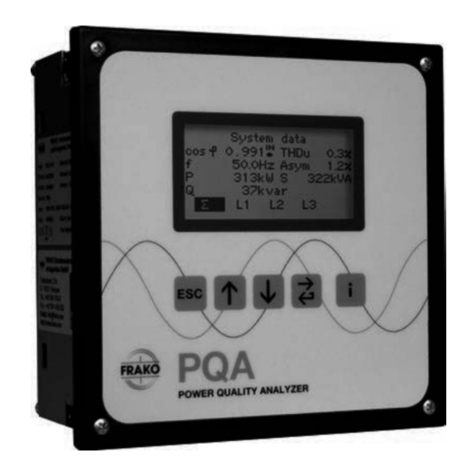4
1 Safety
1.1 Objective
This operating manual has been prepared for persons who install, connect, commission and
operate the PQM1588 Power Quality Manager.
1.2 Safety instructions
No claims under guarantee shall be valid in the event of damages caused by
failure to observe the instructions in this operating manual. We shall not be held
liable for consequential damages!
Incorrect operation or failure to observe the safety instructions will invalidate all
claims under the guarantee, and no liability is accepted for any injuries to per-
sons or damages to assets arising therefrom or occasioned thereby!
DANGER!
The following instructions must be observed to prevent danger to life and limb or
damage to equipment and other assets:
- Installation and commissioning of the instrument in industrial plant must be
carried out in strict compliance with the standards IEC 61508 and
DIN VDE 0801.
- Any other laws, standards, regulations and safety rules (IEC, EN, VDE, etc.)
relevant to this product and the protection of persons and assets must be
observed. In Germany, it is essential to comply with the Equipment Safety Act
(GSG) and the regulations of the German Social Accident Insurance Institutions.
In other countries, the equivalent local regulations must be followed.
- Installation, commissioning, modifications and retrofitting may only be carried
out by appropriately qualified personnel.
- In Germany, it is essential to comply with the regulations of the Social Accident
Insurance Institution covering electrical installations. In other countries, the
equivalent local regulations must be followed.
- The instrument contains live components at the AC supply voltage and must
therefore not be opened.
- If the instrument is visibly damaged, it must not be installed, connected or co
missioned.
- Only approved installation cables must be used.
- If the instrument does not work after commissioning, it must again be isolated
from the power supply.
- The instrument must only be employed on duties up to the specified maximum
power. Overloading the instrument can result in its destruction, create a fire
hazard or cause an electrical accident. The load ratings for the various
connections must not be exceeded.
- Do not expose the instrument to direct sunlight or high temperatures, as these
could damage it or shorten its service life.
- Do not install the instrument near to sources of heat such as radiators or other
devices that give out heat.
- Do not expose the instrument to rain, water, dampness or high levels of
humidity. Avoid direct contact with water at all cost.






























